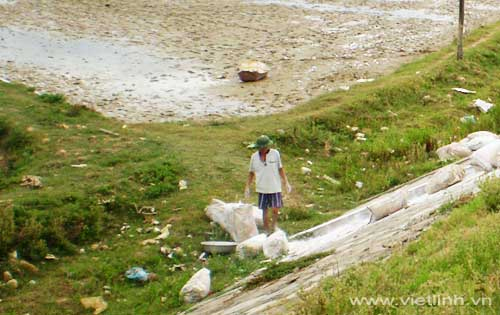Pond preparation
1. Grow-out pond and settling pond innovation
Step 1: Remove water from farming ponds and settling ponds. Remove harmful creatures (shrimp, crabs, snails, insects, fish, etc.). Dredge pond; repair banks, water drains and supplies. Create a slope in the bottom of the pond toward the drains. Thoroughly compact the pond or use canvas to prevent erosion and limit leakage. Use net to fence around the pond to avoid intermediate host species from external environment such as crabs, sand bubbler crabs, snakes, etc.
Step 2: Apply agricultural lime dosage indicated in Table
| pH of the soil in pond and at the bottom of the pond | Lime (tons/ha) |
|---|---|
| 4.5 to 5.0 | 2.5 - 1.5 |
| 5.1 to 6.0 | 1.5 - 1.0 |
| 6.1 to 6.5 | 1.0 - 0.5 |
Step 3: Harrow thoroughly to soak lime into soil to eliminate shrimps, crabs, sand bubbler crabs, snails, insects, and fish left; kill bacteria in the mud; detoxify heavy metals, H2S and neutralize pH. Ponds with canvas in the bottom just need to be disinfected.
Step 4: Dry the pond in 20-30 days.
